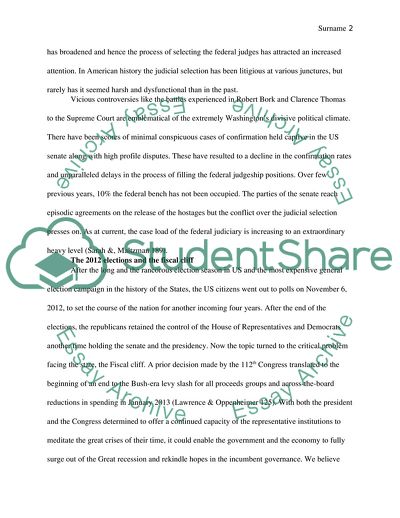Cite this document
(Politics of Confirming Federal Judges Coursework Example | Topics and Well Written Essays - 1750 words, n.d.)
Politics of Confirming Federal Judges Coursework Example | Topics and Well Written Essays - 1750 words. https://studentshare.org/politics/1875369-critical-review-and-analysis
Politics of Confirming Federal Judges Coursework Example | Topics and Well Written Essays - 1750 words. https://studentshare.org/politics/1875369-critical-review-and-analysis
(Politics of Confirming Federal Judges Coursework Example | Topics and Well Written Essays - 1750 Words)
Politics of Confirming Federal Judges Coursework Example | Topics and Well Written Essays - 1750 Words. https://studentshare.org/politics/1875369-critical-review-and-analysis.
Politics of Confirming Federal Judges Coursework Example | Topics and Well Written Essays - 1750 Words. https://studentshare.org/politics/1875369-critical-review-and-analysis.
“Politics of Confirming Federal Judges Coursework Example | Topics and Well Written Essays - 1750 Words”. https://studentshare.org/politics/1875369-critical-review-and-analysis.


